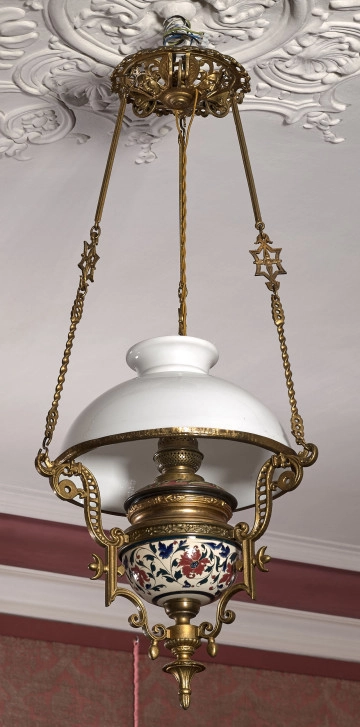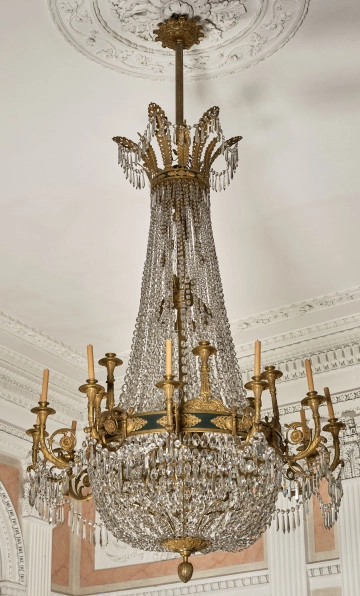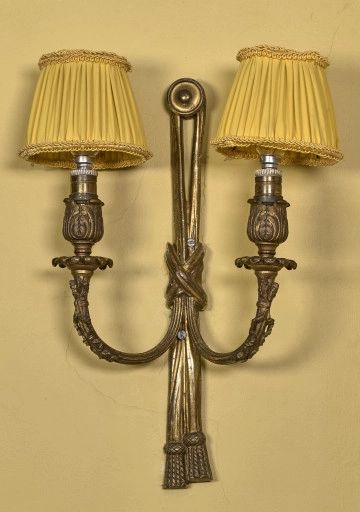
Kerosene pendant lamp
19th (?) century
Castle Museum in Łańcut
Part of the collection: Lampy, żyrandole i kinkiety
The bowl-shaped lamp open from above, originates in ancient Rome and gained its greatest popularity in the 19th century. Most bowl lamps were made of alabaster, porcelain or glass. Alabaster is a fine-grained variety of gypsum that is easy to work with and is characterised by high light transmission and a variety of colours. Alabaster has been used in sculpture since ancient times, including for making lamps. This lamp comes from the museum collection, it dates to the 19th century and is electrified. It has the shape of a very deep bowl, widening at the top, with the rim turned out and decorated with a plant ornament. The top is decorated with a wide strip of openwork ornament in the shape of leaves. In the middle of the bowl, on three sides, there are round metal rosettes mounted on thin legs, to which three chains with oval links are attached, descending radially to the plate-rosettes in the upper section. Attached to it is a thick chain which forms the main suspension of the lamp. The bottom of the bowl is decorated with radially arranged stylized acanthus leaves ending in a flower, the lamp is made of alabaster, the rosettes are made of bronze (cast), in the centre of the bowl there are bulbs. In incandescent lamps, light is emitted by a tungsten filament that has been heated (as a result of current flow). Despite the current widespread use of incandescent lamps, they are not as efficient a source of light as one might think, since only about 5% of the energy created (as a result of the current flowing through the filament) is converted into light and as much as 95% is emitted by the filament in the form of heat. This lamp decorates the bathroom in the Turkish Suite on the ground floor of the castle.
Author / creator
Object type
Lamps, chandeliers and sconces
Technique
sculpture
Material
metal, alabaster
Origin / acquisition method
zakup
Creation time / dating
Creation / finding place
Owner
Castle Museum in Łańcut
Identification number
Location / status

19th (?) century
Castle Museum in Łańcut

19th (?) century
Castle Museum in Łańcut

19th / 20th century
Castle Museum in Łańcut
DISCOVER this TOPIC
Museum of King Jan III's Palace at Wilanów
DISCOVER this PATH
Educational path